In the 1950s, women's shawls were a blend of luxury and practicality. You'd find them crafted from elegant materials like silk and soft chiffon, often embellished with intricate embroidery or lace. These oversized wraps and fitted stoles became essential for both everyday wear and formal occasions. Bold floral and paisley patterns reflected the era's embrace of femininity, while styles varied from draped to tied looks. Hollywood icons popularized these versatile accessories, further enhancing their allure. Exploring the significance and styles of these shawls can reveal deeper insights into 1950s fashion evolution and personal expression.
Overview of 1950s Shawls
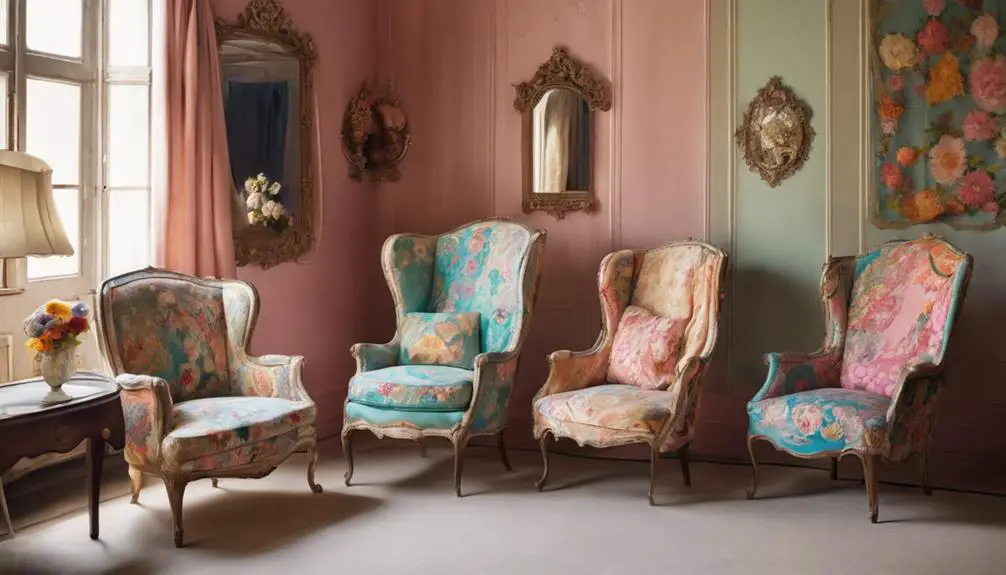
How did shawls become such a staple in 1950s women's fashion? In this era, shawls epitomized elegance and femininity, crafted from luxurious materials like silk, chiffon, and wool. You'd notice that oversized wraps and fitted stoles dominated the scene, often embellished with intricate embroidery or delicate lace, enhancing their allure. These vintage scarves weren't just a fashion statement; they served practical purposes too, providing warmth during cooler evenings while elevating any outfit.
Many shawls featured distinctive labels that reflected the era's unique craftsmanship, such as those from vintage designers known for their quality materials and timeless designs. The decade also introduced tourist souvenir shawls, featuring iconic landmarks, making them trendy among fashionable women seeking unique accessories. You'd spot colorful patterns, from floral motifs to geometric designs, reflecting the vibrant spirit of the time. Shawls were versatile, easily shifting from day to night, complementing dresses beautifully.
The 1950s marked a significant shift in women's fashion, where shawls became essential, symbolizing not only style but also the sophistication that women aimed for. As you explore this rich tapestry of shawl history, it's clear that these accessories were more than just fabric; they were an essential part of a woman's identity during this transformative decade.
Popular Materials Used
Shawls truly came into their own in the 1950s, showcasing an array of luxurious materials that defined women's fashion during the decade. Among the most notable was silk, which became synonymous with elegance and sophistication. A silk scarf often featured vibrant colors and intricate patterns, embodying the era's artistic trends through floral designs and geometric shapes. This material not only elevated outfits but also served as a canvas for creative expression.
Chiffon was another popular choice, especially for evening wear. Its delicate, sheer quality made it perfect for oversized wraps that added a touch of glamour to formal attire. The way chiffon draped around the shoulders enhanced the wearer's silhouette, making it an essential accessory for any elegant ensemble.
Wool shawls also gained popularity, particularly for their warmth and versatility. Handwoven and often adorned with plaid patterns and bright colors, these shawls provided both comfort and style. Many shawls from this era incorporated decorative elements like lace trims or embroidered details, transforming them into statement pieces that completed a woman's outfit, showcasing the intricate craftsmanship of the time.
Iconic Styles and Designs
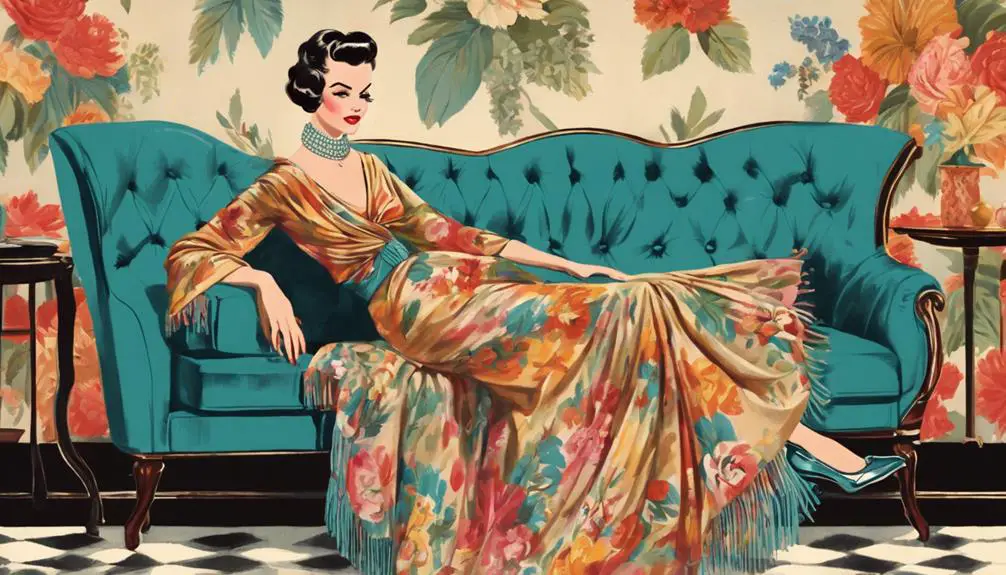
Embracing the vibrant aesthetics of the 1950s, iconic shawl styles emerged that beautifully complemented women's fashion. These vintage scarves, often crafted from luxurious silk, chiffon, and wool, added an air of elegance to both casual and formal attire. Popular designs featured vibrant floral patterns and geometric shapes, reflecting the cultural influences of the era.
One standout style was the babushka shawl, characterized by wide squares tied under the chin. This design combined practicality with fashion, making it a go-to accessory for many women. For formal occasions, shawls draped over dresses not only provided warmth but also enhanced sophistication, elevating the overall look.
The craftsmanship of the time was evident in the hand-rolled edges of many shawls, showcasing meticulous attention to detail. This dedication to quality turned each piece into a statement of style and artistry. As you explore the iconic styles and designs of the 1950s, you'll find that these shawls were more than mere accessories; they were essential elements that defined an era and shaped the way women expressed their individuality through fashion.
Notable Patterns and Motifs
The vibrant patterns and motifs of the 1950s shawls played a significant role in defining the fashion landscape of the decade. These designs not only reflected the cultural zeitgeist but also showcased the wearer's personality and sophistication. You'd often find shawls adorned with a variety of notable patterns, each telling its own story.
- Bold Floral Patterns: Embracing vibrant colors and nature-inspired designs, these were a staple in the era.
- Geometric Motifs: Influenced by modern art movements, these abstract prints added a contemporary flair to traditional styles.
- Paisley Patterns: Drawing from vintage styles, paisley motifs offered a touch of elegance and sophistication.
- Souvenir Shawls: Featuring cityscapes and travel destinations, these shawls became a fashionable way to display one's travels.
- Luxurious Materials: Crafted from vintage silk and chiffon, many shawls were embellished with intricate lace or embroidery, enhancing their elegance.
These diverse patterns not only enhanced the aesthetic appeal of shawls but also reflected broader societal trends in art and culture, solidifying their status as essential fashion accessories of the time.
Shawls as Fashion Statements
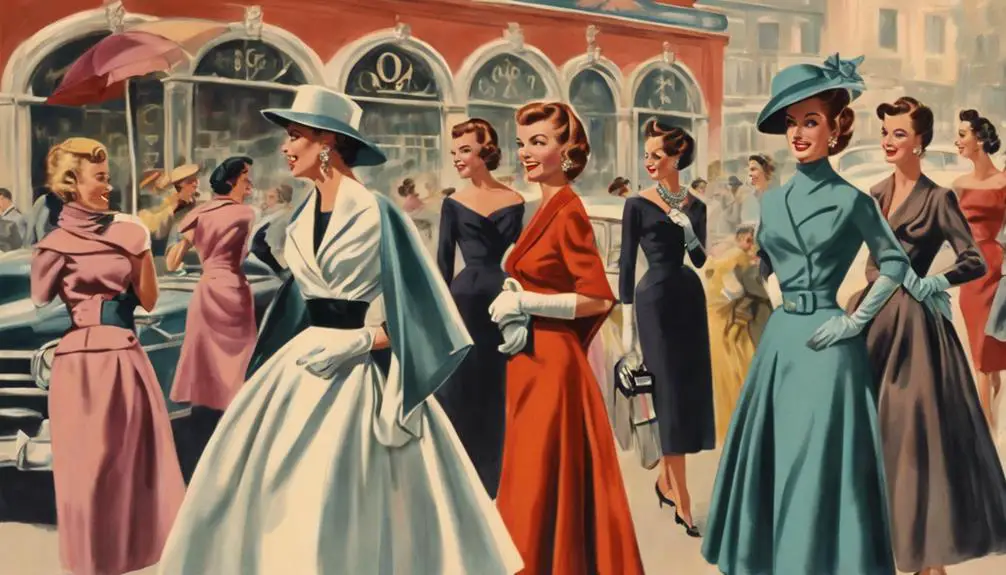
During the 1950s, countless women turned to shawls as essential fashion statements, effortlessly elevating their outfits with a touch of sophistication. These versatile accessories not only provided warmth but also transformed everyday looks into elegant ensembles. Utilizing luxurious materials like silk and chiffon, shawls featured intricate patterns and embellishments reflecting the era's romantic aesthetic.
The ways you could style a shawl were practically endless. Whether draped over your shoulders, tied at the waist, or wrapped around your head, each option showcased your personal flair. Shawls often complemented neck scarves, creating a cohesive and polished appearance that resonated with feminine ideals.
Here's a breakdown of popular shawl styles and their characteristics:
| Shawl Style | Description |
|---|---|
| Draped Over Shoulders | Effortlessly elegant, perfect for evenings. |
| Tied at the Waist | Defines the waist, adding structure to outfits. |
| Wrapped Around Head | A chic look reminiscent of Hollywood glamour. |
| Layered with Neck Scarf | Combines functionality with style. |
| Vibrant Floral Patterns | Embodies the 1950s' embrace of femininity. |
Influence of Hollywood Glamour
Often, Hollywood glamour set the tone for fashion in the 1950s, making shawls not just accessories but symbols of sophistication and allure. Icons like Audrey Hepburn and Grace Kelly showcased elegant shawls, inspiring countless women to adopt these vintage pieces as essential elements of their wardrobes. The influence of these stars transformed shawls into coveted items that exuded luxury.
Key characteristics of 1950s shawls included:
- Luxurious materials: Silk, chiffon, and lace added an element of opulence.
- Popular styles: Oversized wraps and bolero-shaped designs became fashionable.
- Embellishments: Intricate embroidery and beading enhanced their glamorous appeal.
- Evening wear: Shawls emerged as essential accessories for formal events, reflecting Hollywood's chic aesthetic.
- Vibrant patterns: Bold colors and lively designs mirrored the dynamic spirit of 1950s cinema.
As you navigate through this era's fashion landscape, it's evident that shawls served a dual purpose: they were practical, yet their association with Hollywood stardom elevated them to a status symbol. Embracing these vintage shawls allowed women to connect with the enchanting world of glamour that defined the decade.
Everyday Versatility and Use
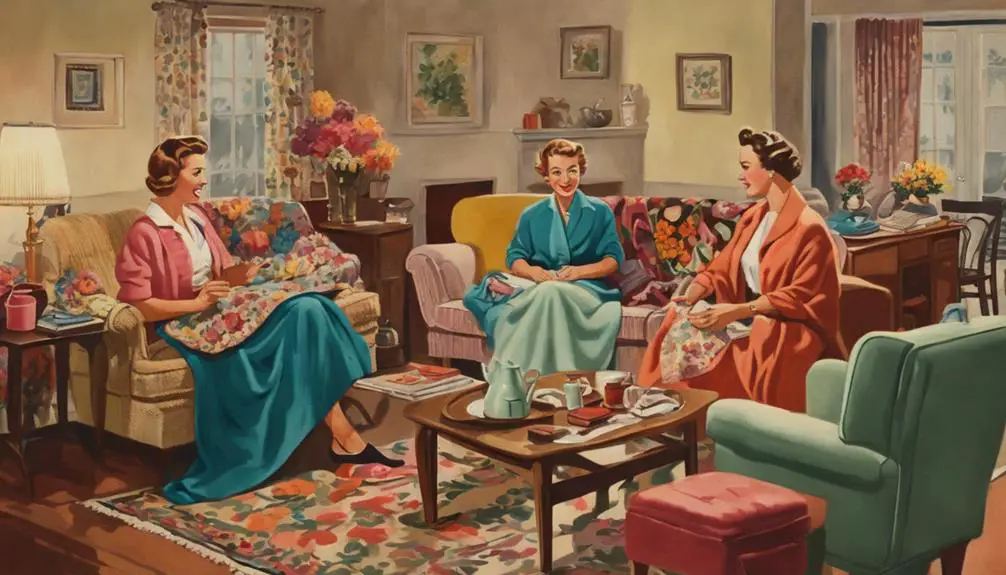
Shawls emerged as a versatile accessory in the 1950s, seamlessly blending practicality with style. You'd find these elegant pieces draped over dresses, transforming your outfit from simple to sophisticated for both day and evening events. Made from lightweight fabrics like chiffon and silk, shawls provided just the right amount of warmth while allowing for easy draping, which suited various weather conditions effortlessly.
The vibrant patterns and intricate embroidery typical of the decade not only showcased artistic trends but also offered you a canvas to express your personal style. The babushka-style shawl, tied neatly under your chin, became an iconic choice, serving both functional purposes and making a fashionable statement. This particular design was embraced by women of all ages, demonstrating its widespread appeal.
You could easily pair your shawl with other accessories like gloves and hats, creating coordinated outfits that worked for casual outings or more formal gatherings. Whether you wore it as a stylish head wrap or incorporated it as a chic scarf, the shawl's adaptability made it an essential part of your wardrobe in the 1950s, proving its timelessness and versatility.
Collectible Vintage Shawls
Collectible vintage shawls from the 1950s present a fascinating intersection of artistry and fashion, enchanting collectors and enthusiasts alike. These exquisite pieces, often made from luxurious materials like silk, chiffon, and wool, showcase intricate designs that reflect the era's vibrant trends. You'll find shawls adorned with popular patterns such as floral motifs and paisley prints, making them standout accessories for various occasions. Especially, brands like Betty Barclay emerged during this time, contributing to the stylish offerings available to consumers. When exploring collectible vintage shawls, consider these key features:
- Material Quality: Luxurious fabrics elevate both comfort and style.
- Unique Detailing: Look for hand-rolled edges or embroidery that enhance their appeal.
- Color Palette: Bold, vibrant hues are a hallmark of 1950s fashion.
- Versatility: These shawls serve multiple purposes, from casual wraps to elegant evening wear.
- Collectibility: Rarity and brand influence their desirability in the market.
As you explore the world of vintage shawls, keep in mind that they not only add flair to your wardrobe but also serve as a reflection of the fashion-forward thinking of their time. Whether you're drawn to novelty prints or classic styles, these scarves are sure to captivate your imagination.
Pricing Trends in the 1950s
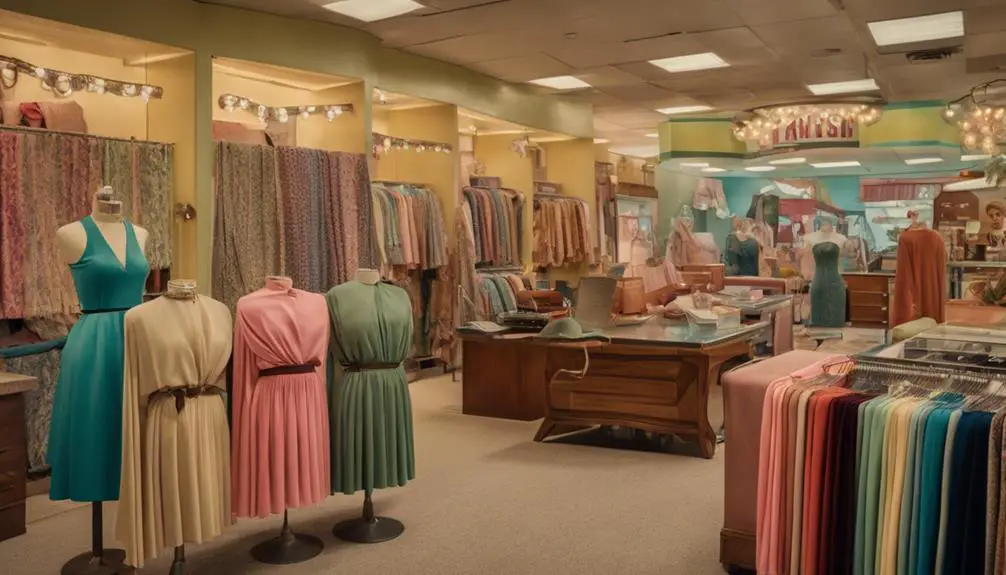
Pricing trends for women's shawls in the 1950s reveal a fascinating relationship between material quality, craftsmanship, and consumer demand. The era witnessed a diverse range of shawl prices, typically fluctuating between $10 and $50. High-quality silk shawls often commanded prices at the upper end, while more budget-friendly options were crafted from acrylic or lighter fabrics. The introduction of designer labels like Dior and Chanel also influenced pricing, elevating shawls featuring unique designs or luxurious materials.
| Material Type | Price Range (1950s) | Modern Collectible Price Range |
|---|---|---|
| High-Quality Silk | $30 – $50 | $50 – $95 |
| Wool Blend | $20 – $40 | $30 – $70 |
| Acrylic | $10 – $20 | $20 – $40 |
| Lightweight Fabrics | $15 – $25 | $25 – $55 |
| Designer Labels | $40 – $50 | $70 – $95 |
Seasonal trends also affected pricing, with end-of-season sales making shawls more accessible to the average consumer. This interplay of factors created a dynamic market, catering to both luxury and affordability.
Caring for Vintage Shawls
Maintaining the quality of vintage shawls from the 1950s requires careful attention to storage and cleaning practices. These shawls, often adorned with delicate features like a scarf collar or luxurious brown mink fur, demand specific care to preserve their beauty and integrity. Understanding the historical context of vintage labels can also enhance your appreciation for these garments, as they often reflect the fashion trends of their time.
To guarantee your shawls remain in excellent condition, consider these essential tips:
- Store them in a cool, dry place, away from direct sunlight to prevent fading.
- Wrap shawls in acid-free tissue paper, which absorbs moisture and prevents creasing.
- Opt for gentle hand washing with cold water and mild soap; avoid harsh detergents.
- Inspect regularly for signs of wear, like fraying edges or stains, and seek professional cleaning if needed.
- When displaying, avoid hanging them for long periods; instead, drape on padded hangers or fold neatly.
Frequently Asked Questions
What Is a Woman's Shawl Called?
A woman's shawl is often called a wrap or stole. It's designed to provide warmth and style, typically made from luxurious materials. You'll find these accessories enhance outfits, making them versatile for various occasions.
What Was the Most Popular Dress in the 1950s?
The most popular dress in the 1950s was the "New Look," designed by Christian Dior. You'd find fitted bodices, cinched waists, and full skirts that beautifully highlighted the hourglass figure, embodying post-war optimism and femininity.
What Was the Ideal Woman in the 1950s?
The ideal woman in the 1950s embodies traditional femininity, focusing on domesticity and family care. You're expected to present yourself beautifully, balancing household responsibilities while nurturing a supportive role in your husband's career and maintaining societal expectations.
How Did They Wear Scarves in the 1950s?
In the 1950s, you'd often wear scarves elegantly tied around your neck or head, enhancing your outfit's sophistication. These versatile accessories complemented various styles, showcasing both practicality and fashion in your daily wardrobe choices.


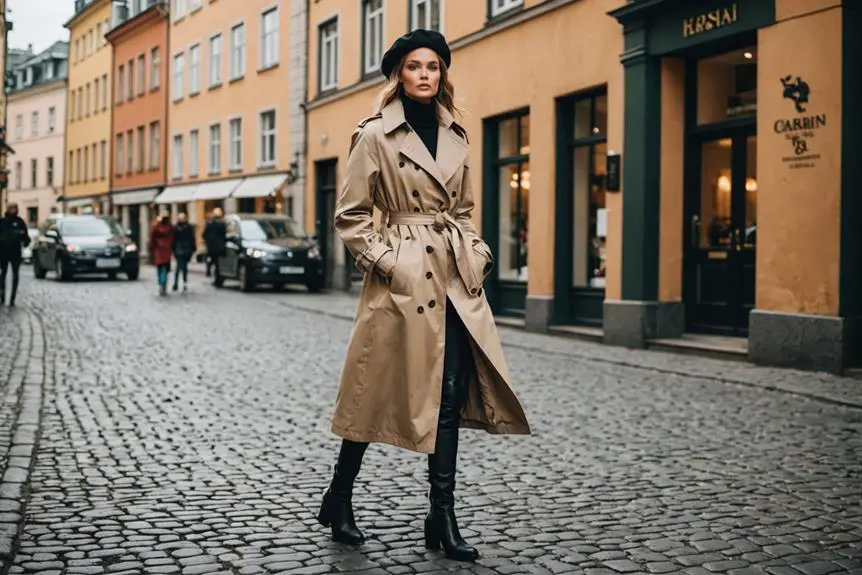

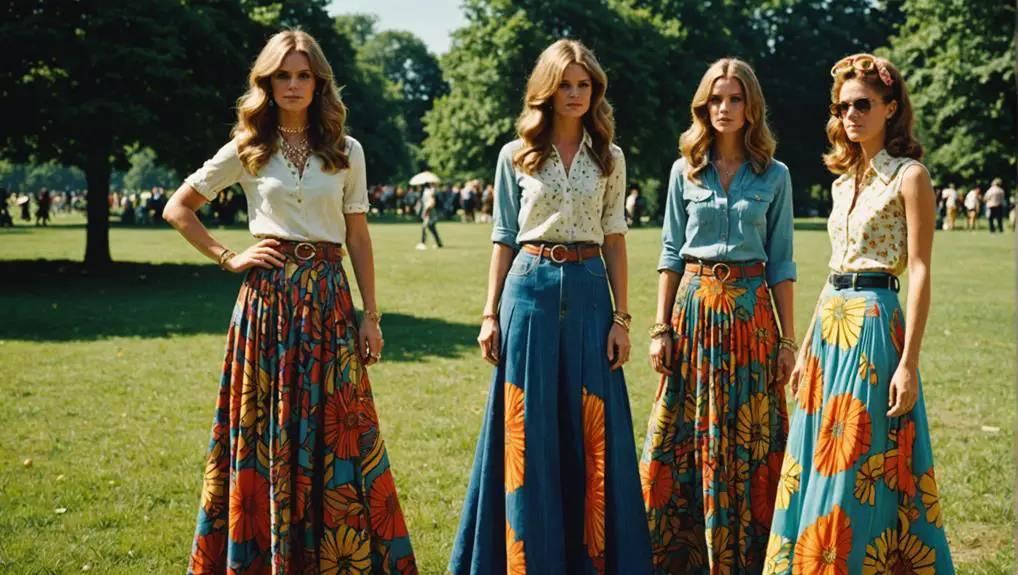
Loved this nostalgic read! The elegance of 1950s shawls is timeless a classic pashmina would beautifully echo that vintage charm in modern wardrobes.